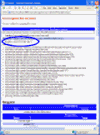![[Tapestry Banner]](images/Tapestry-Banner.png)
| How does Tapestry compare to other frameworks?
Tapestry is very much unlike most other frameworks in that it doesn't use code generation; instead it uses a true component object model based on JavaBeans properties and strong specifications. This gives Tapestry a huge amount of flexibility and enables dynamic runtime inspection of the application with the Tapestry Inspector (a mini-application that can be built into any Tapestry application). In addition, Tapestry applications require far less Java coding and are far more robust than equivalent applications developed with other popular frameworks. This is because the Tapestry framework takes responsibility for many important tasks, such as maintaining server-side state and dispatching incoming requests to appropriate objects and methods. The many new features of release 3.0 mean that Tapestry is not only the most powerful web application framework available, it is also the fastest and easiest to adopt, regardless of whether your background is Java, Perl, XML or PHP! |
|
| How is the performance of Tapestry?
My own testing, documented in the Sept. 2001 issue of the Java Report, agrees with other testing (documented in the Tapestry discussion forums): Although straight JSPs have a slight edge in demo applications, in real applications with a database or application server backend, the performance curves for equivalent Tapestry and JSP applications are identical. Don't think about the performance of Tapestry; think about the performance of your Java developers. |
|
|
Is Tapestry a JSP tag library?
Starting with release 3.0, Tapestry includes a simple JSP tag library to allow JSP pages to create links to Tapestry pages. |
|
| What does it cost?
Tapestry is open source and free. It is licensed under the Apache Software License, which allows it to be used even inside proprietary software. |
|
| Is there a WYSIWYG editor for Tapestry, or an IDE plugin?
Currently, no WYSIWYG editor is available for Tapestry; however, the design of Tapestry allows existing editors to work reasonably well (Tapestry additions to the HTML markup are virtually invisible to a WYSIWYG editor). Spindle is a Tapestry plugin for the excellent open-source Eclipse IDE. It adds wizards and editors for creating Tapestry applications, pages and components. |
|
| I have to restart my application to pick up changes to specifications and templates, how
can I avoid this?
Start your servlet container with the JVM system parameter org.apache.tapestry.disable-caching set to true, i.e.,
-Dorg.apache.tapestry.disable-caching=true.
Tapestry will discard cached specifications and templates after each request. You application will run a bit slower, but changes to templates and specifications will show up immediately. This also tests that you are persisting server-side state correctly. |
|
|
Does Tapestry work with other other application servers besides JBoss? Of course! JBoss is free and convienient for the turn-key demonstrations. You can download Tapestry and JBoss and have a real J2EE application running in about a minute! The scripts that configure JBoss are sensitive to the particular release of JBoss, it must be release 3.0.6. However, Tapestry applications are 100% container agnostic ... Tapestry doesn't care what servlet container it is used with and does not even need an EJB container. |
|
|
What is "line precise error reporting"? Tapestry applications are built from templates and specifications. It's natural that when these templates and specifications are read, any syntax errors are reported, and the precise file and location is identified. Tapestry goes far beyond that! It always relates runtime objects back to the corresponding files so that even runtime errors report the file and location. For example; say you bind a parameter of a component that expects a non-null value, but the value ends up being null anyway, due to a bug in your code or your specification. Tapestry can't tell, until runtime, that you made a mistake ... but when it does, part of the exception report will be the line in the template or specification where you bound the component parameter. Zap! You are sent right to the offending file to fix the problem. Other frameworks may report syntax errors when they parse their specifications, but after that, you are own your own: if you are lucky, you'll get a stack trace. Good luck finding your error in that! Tapestry gives you a wealth of information when unexpected exceptions occur, usually more than enough to pinpoint the problem without having to restart the application inside a debugger. |

